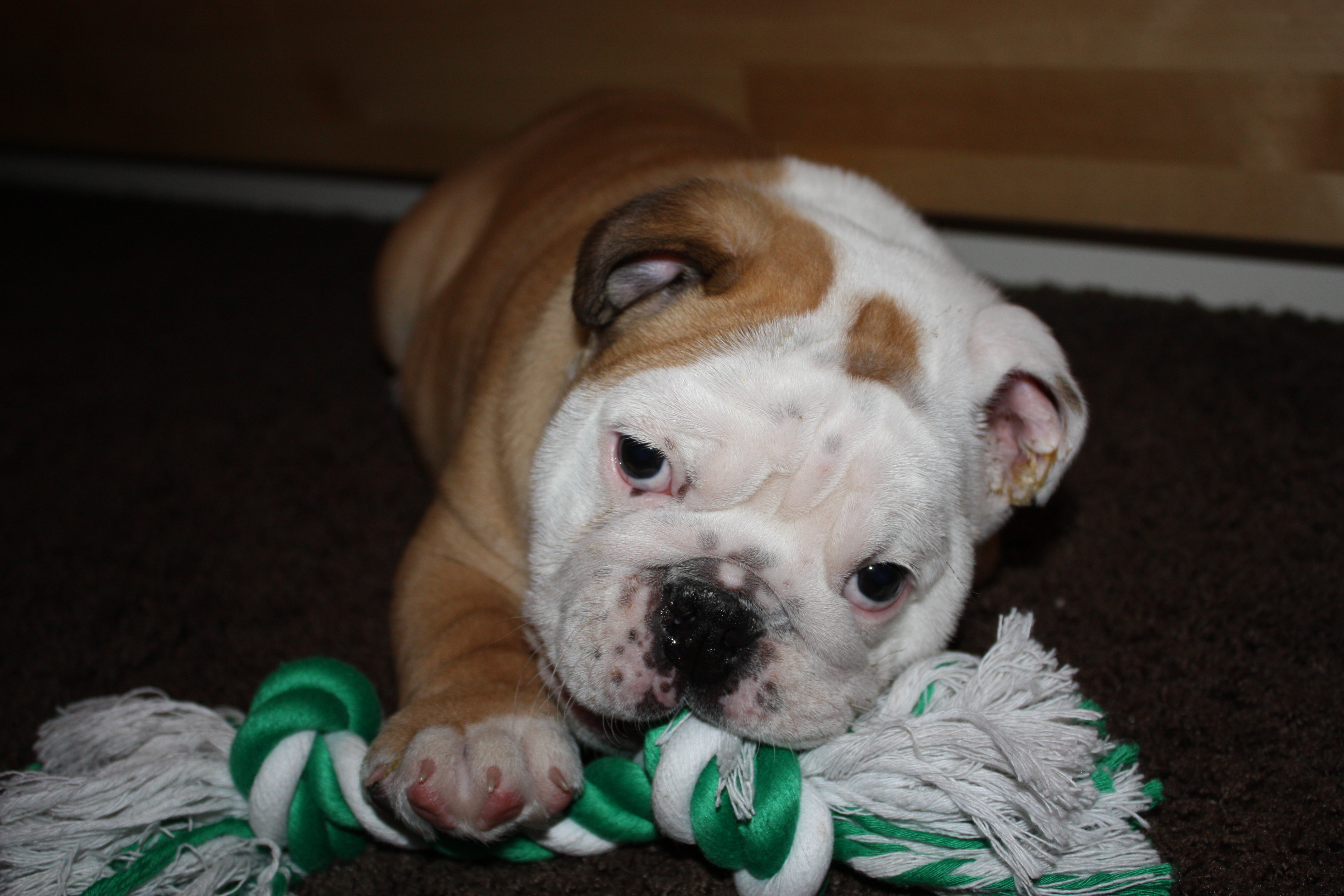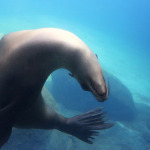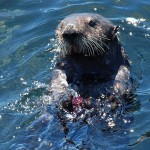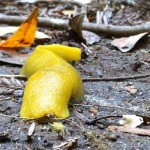For this entire school year, I’ve been trying to find a story into which I could sneak some mention of my puppy. Every single time we got a project, I though, “Is this it? Is this finally THE ONE?”
No. And no. And no again.
Until one fine day at the end of April, we got to film and edit short video biographies for our multimedia class. Guess who I picked as my subject? As I write this, Dozer the English bulldog is nestled against my back in our beanbag chair, snoring away. He is the product of many generations of forced inbreeding, and I love him with all my heart. I hope you enjoy.
English bulldogs are descended from old English bulldogs (really). Old English bulldogs were taller and had less-squished noses than their descendants. They were bred for bull-baiting. Their up-turned noses helped them breathe while keeping a bull’s nose clamped in their jaws, the wrinkles of skin on their faces, called ropes, helped keep the blood out of their eyes, and their stubborn temperament made them hang on long after any reasonable animal would have let go and run away to lick its wounds.
Dozer does not bait bulls. He runs from loud noises and plastic bags. Like most modern English bulldogs, he has a calm demeanor and a relaxed outlook on life. He’s had a few skin issues, and we have to watch carefully for eye disease and joint problems.
Pure bred animals are often more prone to diseases than their mixed-breed counterparts. That’s because they have been bred over and over again with very similar animals, winnowing down their genetic makeup so severely that specific traits consistently show up. It’s just like people. When family members have children together, those children are more likely to have health problems (think of how many of the Russian royal family had hemophilia).
Genes for maladaptive traits like hemophilia (or having a face so scrunchy it’s hard to breathe) can hide when they’re part of a genetic mixed bag with lots of variety. They don’t show up that often because other, more dominant genes override them. But when you breed similar creatures together, be they human or canine, you lose a lot of that genetic variety, and those hidden genes can rear their ugly heads. Or their adorable, wrinkly heads, as the case may be.
Well, that’s my attempt at making my adorable puppy relevant to readers interested in science. Thanks for your indulgence, those of you who stuck with me this far. Here’s your reward:








The genetics of cuteness– my favorite kind of science story!!
The video is now working. Sorry about the technical difficulties.